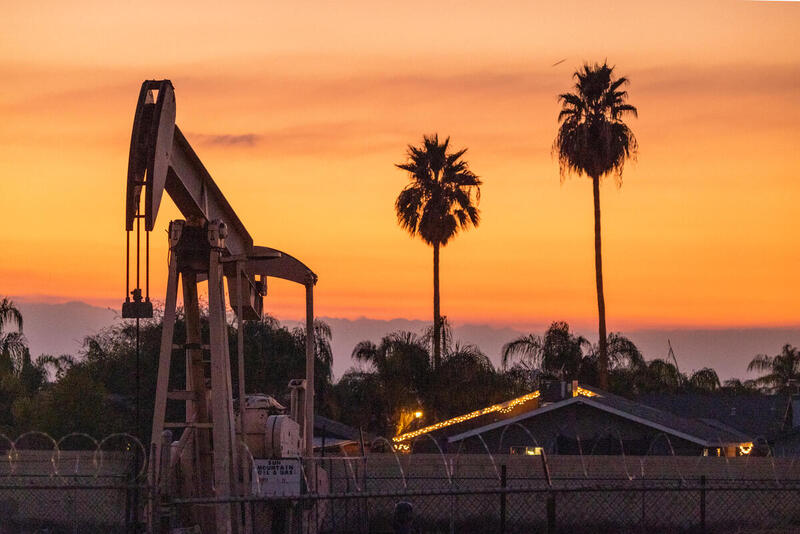A new report from the Sierra Club has found that more than 40,000 unplugged oil and gas wells are sitting idle across California — potentially leaking planet-warming gas and unsafe chemicals, but no longer actively extracting fossil fuels.
In theory, it shouldn’t be possible to leave so many wells in that neglected state. Companies that operate in California are required to safely “abandon” wells that are no longer in use, removing pumpjacks and sealing off openings forever with concrete. And yet, the report found that more than 40 percent of unplugged wells in California haven’t produced oil or gas in at least two years, which is the state’s formal criteria for an “idle” well. According to Sierra Club’s review of California Geologic Energy Management Division (CalGEM) data, only three companies are responsible for most of these wells: Chevron, Aera Energy, and California Resources Corporation. And while operators do pay modest fees for letting their wells stay idle so long, aggressive industry lobbying has helped to keep those penalties as low as possible.
It didn’t have to be this way, said Jasmine Vazin, a Los Angeles-based senior campaign representative at the Sierra Club and report co-author. She pointed out several other states with stronger rules: in Colorado and North Dakota, for instance, companies are given six months to shut wells once they’ve been idle for a year. “Compared to other states, it’s just unacceptable,” she said.
Even with their productive lives behind them, these sites can still pose significant risks.
“If not properly plugged and abandoned, these wells and facilities can contaminate waterways and soil, serve as a source of climate and air pollutants, and can present physical hazards to people and wildlife,” CalGEM writes in a 2023 legislative report. Unplugged wells frequently continue to emit methane, a greenhouse gas with a warming impact many times that of CO2. They’re also known to release benzene, a well-established carcinogen, as well as leak other hazardous chemicals like uranium and lead.
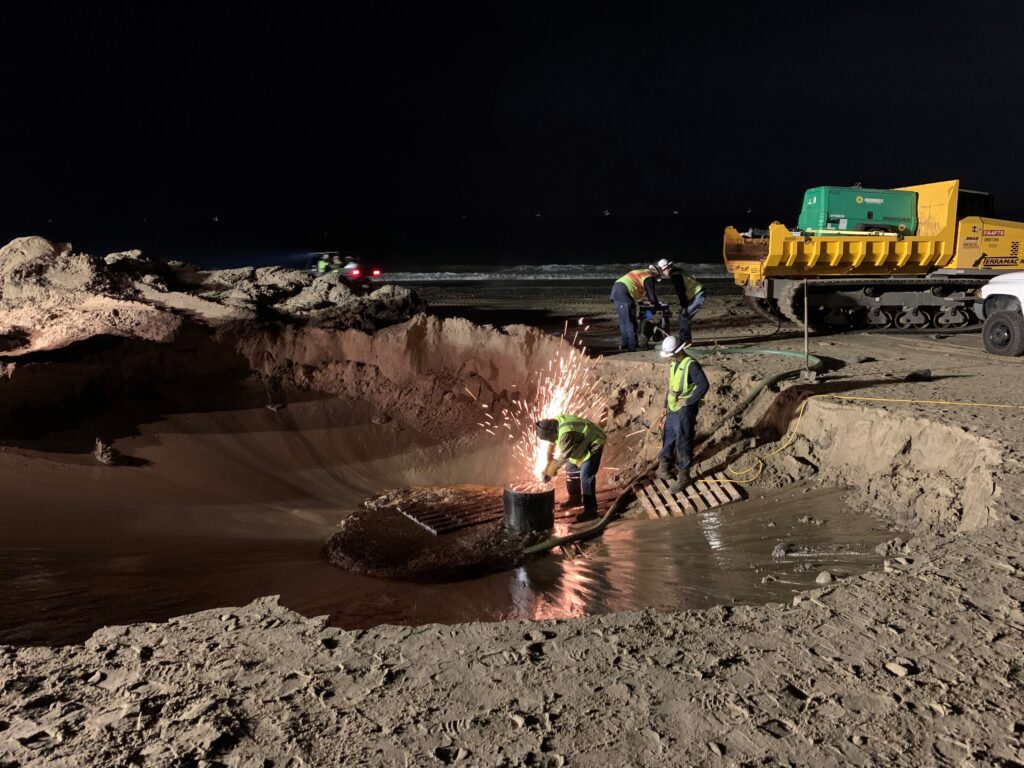
Plugging a well is a complex process that can cost over $100,000 per site — and many California operators have simply opted to defer their obligation by paying fees as low as a few hundred dollars per year. Some companies manage to avoid footing the bill forever. Of the roughly 40,000 idle wells, about 5,000 are likely orphan wells, deemed by the state to no longer have financially viable operators. Orphan wells become the state’s responsibility, putting taxpayers on the hook for the cost of cleaning up the oil industry’s mess.
For the remaining tens of thousands of idle wells, the fees that companies do pay are so minimal that those that can afford to close them down routinely choose to keep them unplugged for long periods instead. The Sierra Club analysis revealed that ownership of these California wells is intensely concentrated, with two-thirds owned by just three well-heeled companies.
These operators can afford to plug their idle wells in California, to put it mildly. Multinational oil and gas giant Chevron tops this list with its 9,055 idle wells — and its $35.5 billion in global profit in 2022. The second largest holder is Aera Energy, which was owned by Shell and ExxonMobil until 2022, and which retains 8,948 idle wells. Its current owners, the German private equity firm IKAV and an investment vehicle owned by the government of Canada, together hold over $500 billion in assets. The Sierra Club estimates plugging their wells in California would cost Chevron and Aera about $1.7 billion each.
The third largest holder is California Resources Corporation (CRC), a smaller energy company with 6,658 idle wells. While it made only around $500 million in 2022, the company was spun off a decade ago from Occidental Petroleum, a multinational with over $13 billion in recent profits. According to Hollin Kretzmann, a senior attorney for the environmental research and advocacy nonprofit Center for Biological Diversity, Occidental likely could still be held liable for plugging those wells under California law if CRC couldn’t pay.
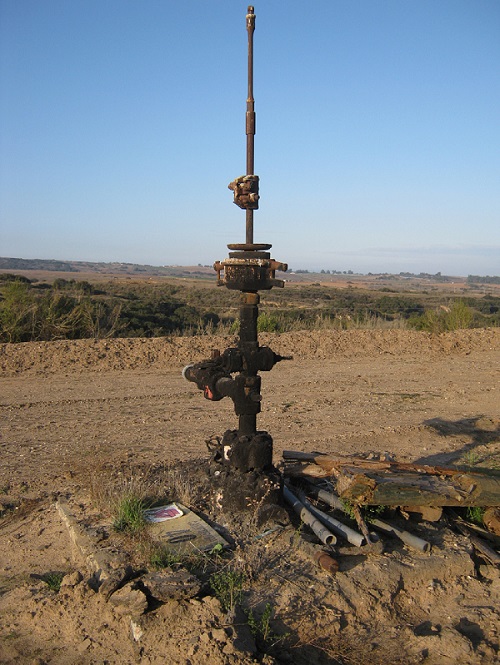
In a statement to DeSmog, Deena McMullen, a Chevron spokesperson, said the company was working proactively to manage the issue, adding that it had plugged thousands of wells in California since 2018, including more than 2,300 wells last year. Not all of these wells qualified as idle wells. “We will continue to focus on safely plugging idle wells and ensuring that the taxpayers are not left responsible for Chevron’s obligations,” the company wrote.
Aera Energy spokesperson Kimberly Ellis told DeSmog that the company had plugged more than 5,000 wells since 2019. “We have always taken our responsibility to retire idle wells very seriously, and we have supported California’s efforts to ensure it has the resources needed to continue reducing the state’s idle well inventory,” Ellis wrote in a statement to DeSmog.
CRC did not respond to a request for comment.
But the Sierra Club insists that Chevron, Aera Energy, and CRC still haven’t moved fast enough, instead exploiting rules that in some cases they helped to shape.
“California’s laws are failing to hold polluters accountable,” the nonprofit writes in a blog post disputing industry criticism of its report.
‘Your bill could bankrupt oil and gas operations’
Existing rules in California make it easy for oil and gas operators to delay plugging wells, despite their legal responsibility to do so. Instead, companies can pay nominal fees to indefinitely defer the cost and logistical complexity of cleanup, and these forgiving rules are the direct result of industry’s influence on the legislative process. Previously unreported documents from Califorrnia’s state archives, obtained by the Sierra Club and shared with DeSmog, show how a full-scale offensive — dating back decades — from the oil and gas industry worked to ensure the best deal possible.
“Companies have spent a lot of time, energy, and money lobbying to ensure that the laws that are currently on the books are extremely lax,” said Vazin. “The current ecosystem we’re working in didn’t come out of nowhere.”
In the late 1990s, the state’s oil and gas lobby worked to pre-empt more stringent regulations with its own permissive rules, archival documents show. “It is generally thought that industry needs to take a proactive approach in dealing with idle wells, before a legislator who is hostile to the industry takes this up as his or her cause,” a lobbyist for the California Independent Petroleum Association (CIPA) wrote in a 1998 memo to the organization’s board of directors.
The industry’s preferred solution, which it actively supported in a bill passed that year, had been to offer companies a choice between bonding and annual fees. Companies that didn’t want to pay fees on an annual, per-well basis could post a five-figure indemnity bond for every unplugged well, an amount intended to cover costs if a site is improperly deserted. But industry-approved legislation also gave companies the option of filing a “blanket bond” instead — a popular approach that offered massive bulk discounts while still satisfying the bonding requirement.
Today, the bonds California holds only cover a tiny fraction of the potential costs of cleanup. A 2018 analysis by the California Council on Science and Technology, an independent state-established policy nonprofit, found that the available funding from all bonds covered on average just $1,000 per well statewide. Though a 2019 law increased CalGEM’s authority to raise any individual company’s blanket bond to $30 million, the agency had so far declined to do so, according to the Sierra Club’s report.*
That was accurate on December 4, the day Sierra published its findings. But after this story published, Don Drysdale, a public information officer with California’s Department of Conservation, wrote to clarify that the situation had since changed. Late last year, CalGEM obtained a $30 million blanket bond from CRC, dated 12/19/23. CRC is the only company to have issued a bond of that magnitude, but CalGEM is “endeavoring to get more,” Drysdale said.
A day after this story published, CRC announced another major development: it would acquire Aera Energy in a $2.1 billion deal. Drysdale said the recently issued maximum bond was “not related to the merger with Aera.”
Back in 2016, California lawmakers made moves to deal with the rising number of idle wells. Assembly members Das Williams and Tony Thurmond introduced AB 2729, a bill that removed the blanket bond exception and mandated dramatically increased fees for every individual unplugged well, regardless of bond status. The proposed fee structure, which ranged from $500 to $10,000 per well based on how long it had been idle, would have cost the biggest operators tens of millions of dollars per year, according to a Sierra Club analysis shared with DeSmog.
Along with that stick, AB 2729 also offered a carrot. It gave oil and gas companies an opportunity to avoid paying those fees, but only if they hit an ambitious, ongoing benchmark: annually plugging 25 percent of their long-term idle wells — those out of production at least eight years.
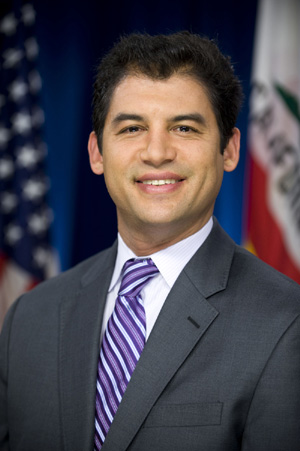
Pro-industry lobbying groups immediately and vociferously opposed the first incarnation of AB 2729, ramping up an attack within weeks of the bill’s introduction.
In March 2016, Assemblyman Williams received a letter signed by industry groups including the Western States Petroleum Association (WSPA), CIPA, and the California Chamber of Commerce. AB 2729’s proposed regulatory changes “could bankrupt oil and gas operations in California,” they wrote. Further, they argued that “forced plugging” was misguided, because idle wells did not pose “any threat to public safety or the environment” — while resulting in economic harm.
“Excessive fees also force operators to redirect capital that could be otherwise put toward investment and projects that generate jobs and expand domestic energy production in California,” they wrote.

Williams, who today is first district supervisor for Santa Barbara County, said that back then, the oil and gas sector was in a position to throw its weight around. The industry essentially had “veto power” in the California legislature, he said. At the time, his Democratic colleagues had such a slim majority that they could only afford to lose a few votes on a measure — a situation that empowered the party’s moderate bloc, which Williams said tended to want to appease fossil fuel interests.
“I don’t want to say that happened in every case, but that was often the case — especially on the industry’s highest priorities,” he said.
Given that dynamic, Williams said he had no choice but to negotiate. Given then-governor Jerry Brown’s strong support of the bill, he said, it was clear to everyone that the new approach to annual fees on idle wells would pass in some form. But industry managed to reduce those fees considerably, as revealed by documents obtained by the Sierra Club and shared with DeSmog.
That May, in a memo outlining their opposition, CIPA and WSPA proposed a series of changes to AB 2729. One key suggested amendment included greatly reducing the proposed annual fees — by a factor of ten in some cases. Another allowed the largest operators to avoid fees entirely by closing only 4 to 6 percent of their long-term idle wells, rather than 25 percent, each year. These amendments effectively sapped the power of both the bill’s carrot and stick.
The changes the industry groups proposed ultimately appeared in the language of the final bill — and once their changes were included, the oil and gas sector stopped opposing AB 2729. In a memo obtained by the Sierra Club from the state archives, industry groups including CIPA and WSPA expressed satisfaction with the changes, updating their stance on the legislation to “neutral.” Around the same time, a third sponsor, moderate democratic assemblyman Rudy Salas, was also added as a co-sponsor of the bill.
“Adding Rudy Salas, a legislator that had previously been opposed to the bill, was a signal to the mods that it was okay to vote for it,” Williams said.
On June 1, the same day those industry-approved amendments were published, Salas received a $4,200 campaign contribution from Chevron. Later that month, according to financial disclosures from that year, he accepted an all-expenses paid trip to a CIPA conference in Napa wine country. In 2016 alone, Salas received over $45,000 in donations from oil and gas interests.
Salas, who is currently running for U.S. Congress, did not respond to a request for comment through his campaign. CIPA and WSPA did not respond to requests for comment.
Under the conditions ultimately set by AB 2729, it makes little economic sense for oil and gas operators to avoid fees by plugging any more than a small fraction of their wells each year. The all-in cost of plugging a single well can be over 150 times higher than the highest fee California levies, according to the Sierra Club. Meanwhile, the total number of idle wells in California has grown by about 32 percent since 2018, the year AB 2729’s provisions took full effect.
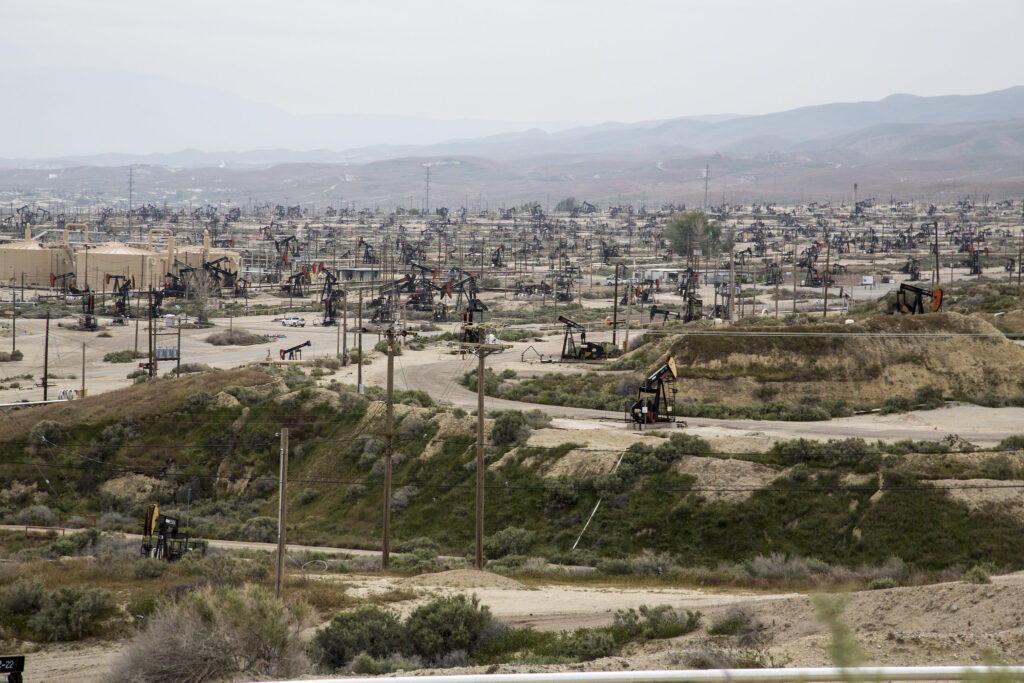
CalGEM, in a 2023 legislative report, states that some of this increase may be due to more accurate tallying methods adopted in 2019, which contributed to a roughly 25 percent jump that year. But no matter how you count, the overall number of idle wells in California hasn’t meaningfully declined since AB 2729 passed — and the state’s most recent data suggests the total has even increased slightly. Still, Williams feels the version of his bill that passed was an important step toward accountability.
“I will tell any legislator that asks, the requirements should be stronger,” he said. “The fees need to be raised to a point where the oil companies have more of an incentive to abandon and less of an incentive just to pay the fee.”
‘The job is not done’
Since 2016, California has taken some strides toward industry accountability. Last year, Governor Gavin Newsom signed into law the Orphan Well Prevention Act, which forbids companies from selling their idle wells until the costs of cleanup have been covered. The law is intended to prevent larger companies from selling off their straggling wells to smaller operators without the resources to take them out of commission properly, helping to ensure that long-time operators — and not the government — end up footing the bill.
But unless new rules are introduced that make it harder to let wells sit idle, the crisis in California is only likely to intensify. The state has 60,000 wells that are nominally “active;” however, the vast majority are on the verge of falling idle. According to a 2023 Carbon Tracker analysis, the state’s wells produce on average a mere 3.9 barrels of oil equivalent each day. That’s well below the 15-barrel-per-day threshold industry uses to characterize a marginally producing “stripper well.” For Chevron, average daily production is even lower — just 3 barrels, according to a recent FracTracker analysis.
Oil production in the state has been on a steady decline for decades now, said Kretzmann, from the Center for Biological Diversity. “The oil industry loves to blame that on California’s environmental regulations and whatnot. But the bottom line is, the easy oil in California has gone.”
The Carbon Tracker report said California’s onshore oil and gas industry has entered a “decommissioning phase,” a period of scaling back driven by falling profits. Dwayne Purvis, founder of the consulting group Purvis Energy Solutions, who authored the report, said it’s very possible that “an accelerated decline has already begun in California.” As companies lose incentive to operate in the state, it will be more enticing than ever for operators to walk away from their responsibilities.
“The number of wells that are going idle is still going up,” Williams said, “which means the job is not done.”
*UPDATE 02/09/24: This story has been updated to reflect new information about CalGEM’s issuance of the first $30 million maximum blanket bond to CRC and the company’s purchase of Aera Energy.
Subscribe to our newsletter
Stay up to date with DeSmog news and alerts


